Our Trip to Bandelier
We had some close friends from San Antonio come and visit a couple of weeks ago. With the COVID variant restricting much of our inside fun, we decided to do some sight seeing outdoors.
I had never seen Bandelier despite our living only a little over an hour’s drive from here. My friend Tim invited me to go (as his sister lives in Los Alamos which is almost adjacent to the park) and I couldn’t say “no”.
Bandelier is a National Monument, as opposed to a National Park. It was designated as such by Woodrow Wilson in 1916 and named for Adolph Bandelier, a Swiss-American anthropologist. The sites that are open to public date back to the Pueblo III Era (1150-1350) thru the Pueblo IV Era (1350-1600). The cliff walls are filled with crawl spaces and horizontally lined holes used to support the latillas (wood beams) creating support for second/third stories or roofing.
So much of the original plaster still remains after many hundreds of years. Most of the living areas were torched after plastering. The soot would help seal the crumbly volcanic tuff and help prevent grit and dirt from constantly sifting down onto the floor.


The trail starts out as a pretty nondescript walk. If you weren’t aware that there were ruins about a quarter mile from the start, you’d just think it was just a beautiful, New Mexico hiking trail. But that all changes as you round the bend. The ruins soon become apparent.
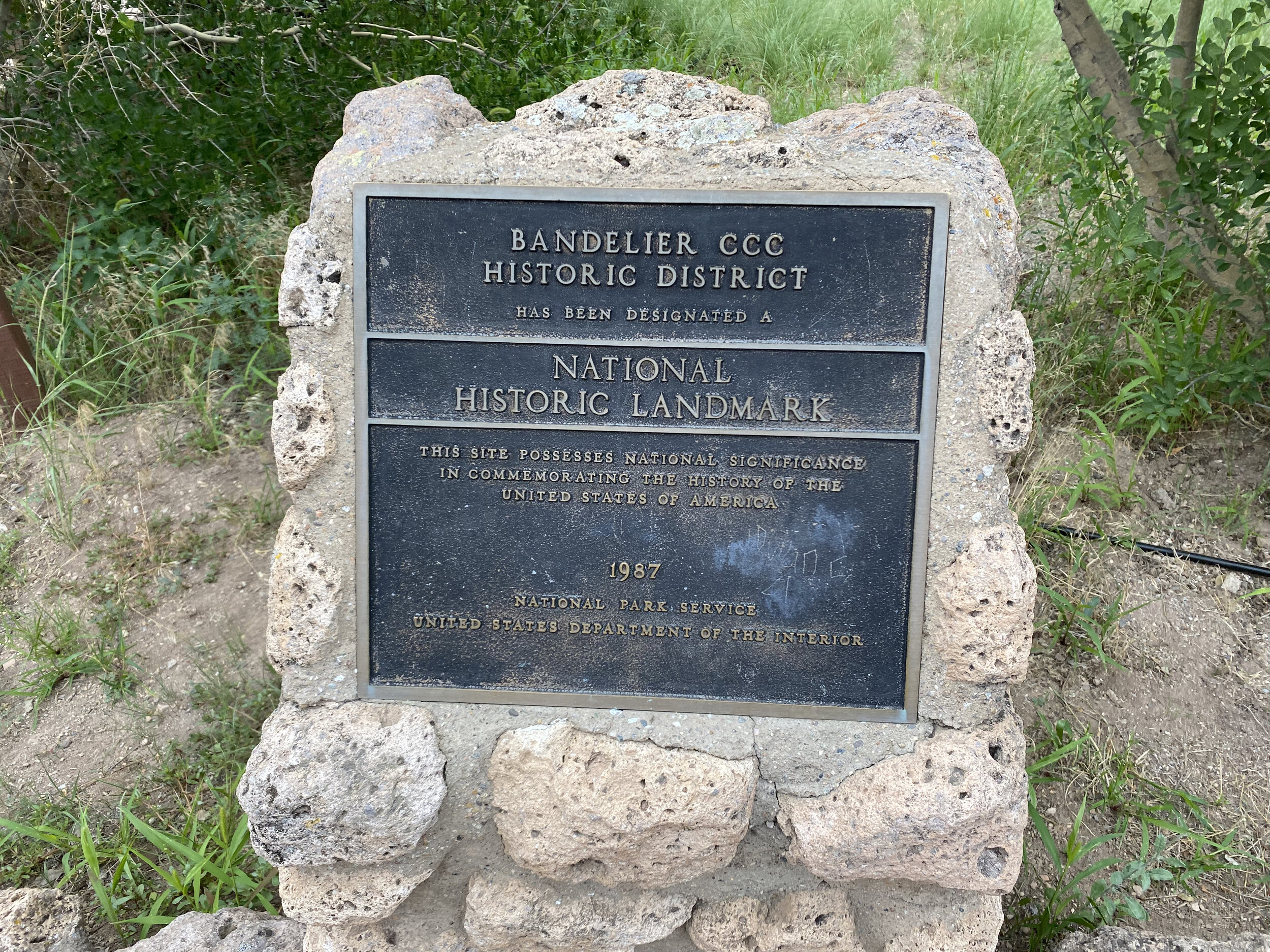
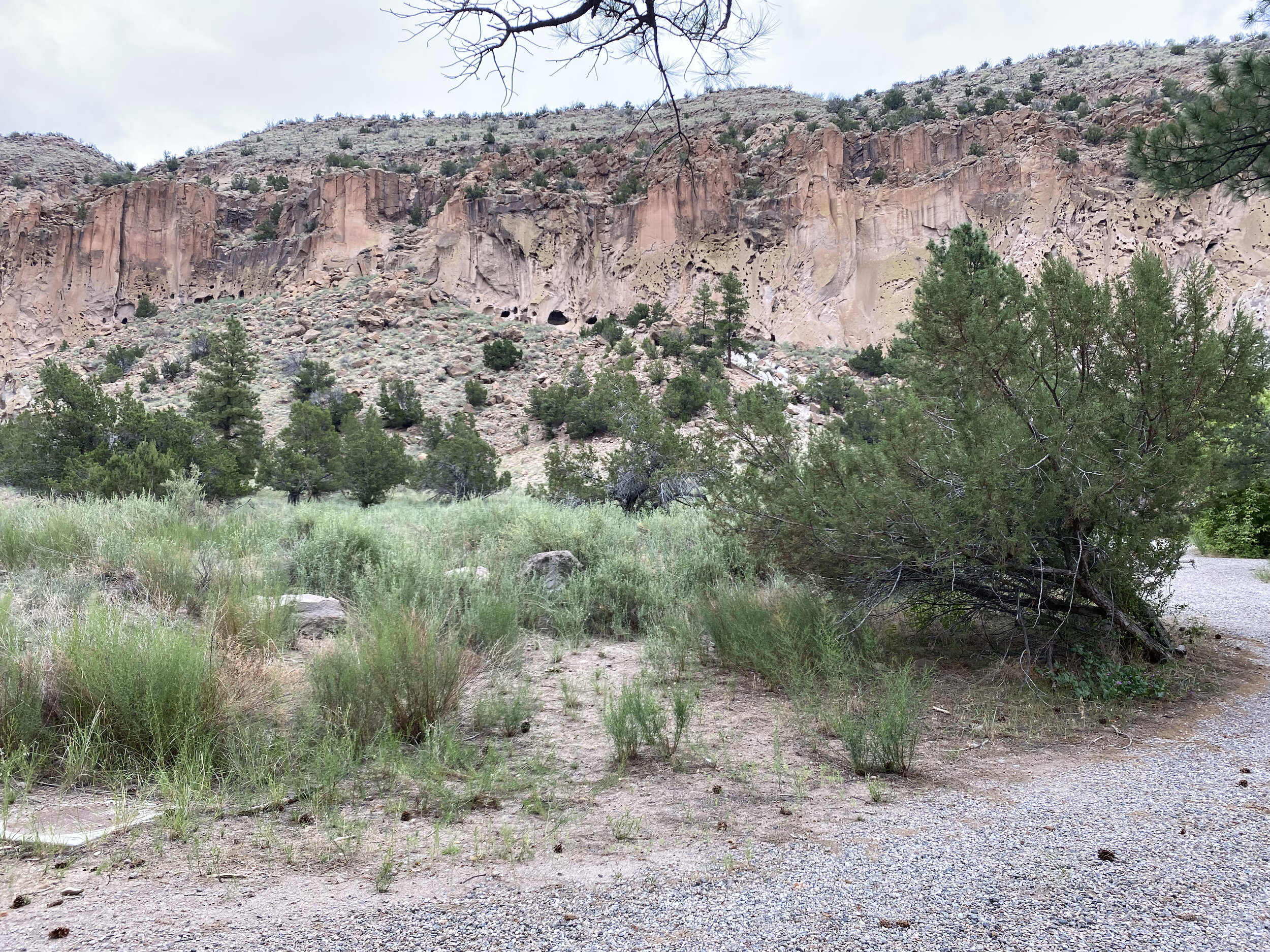
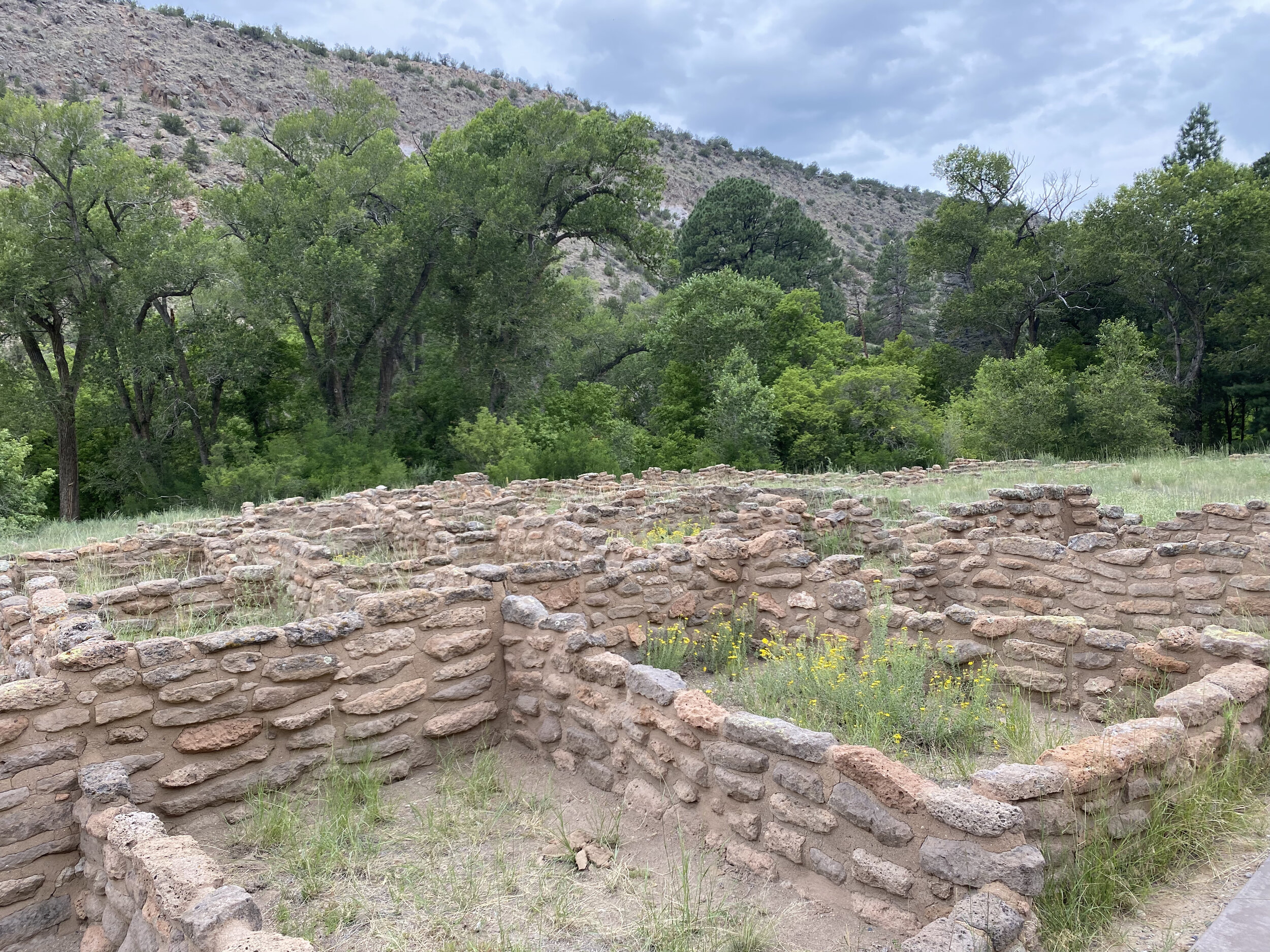
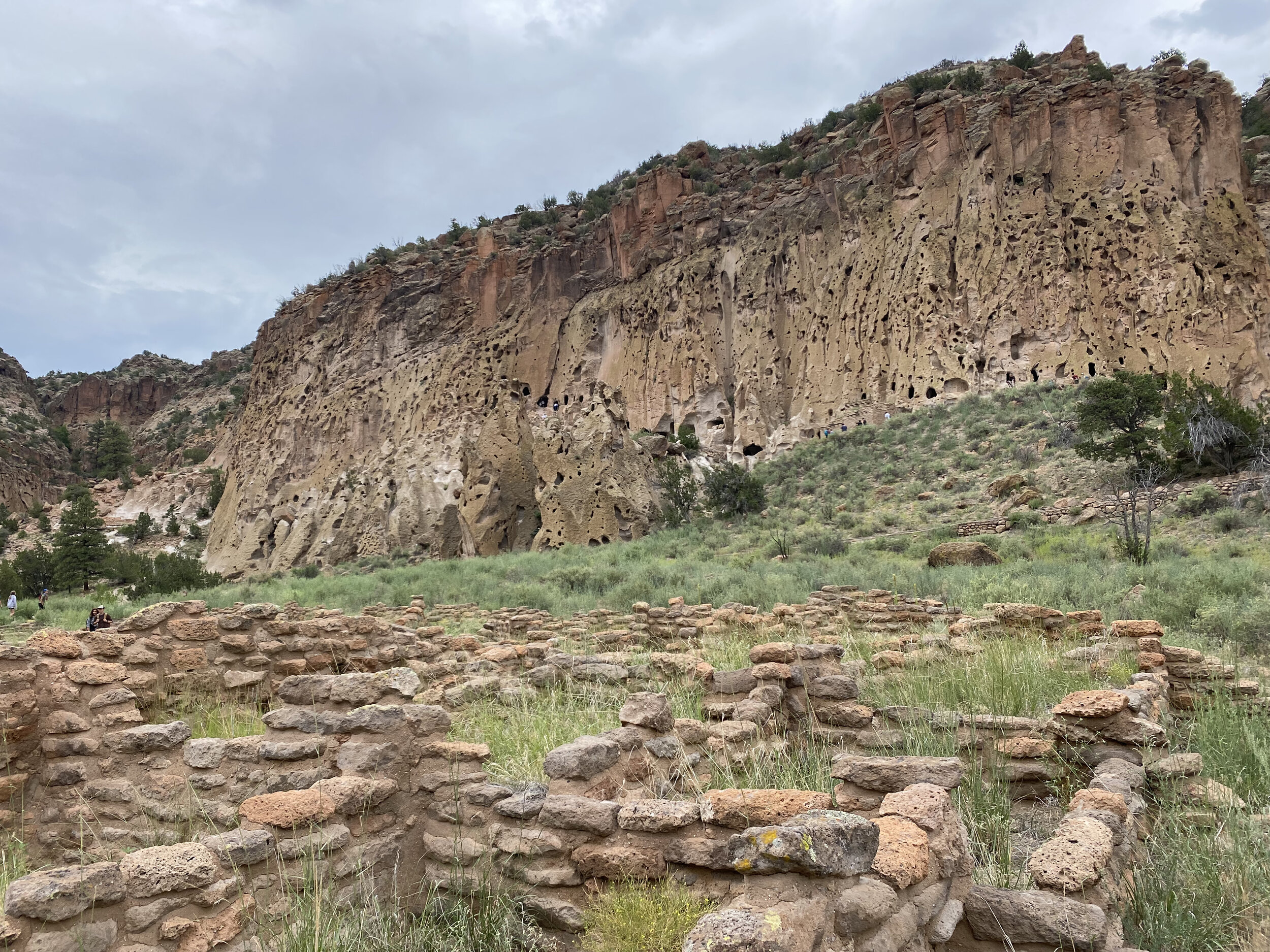
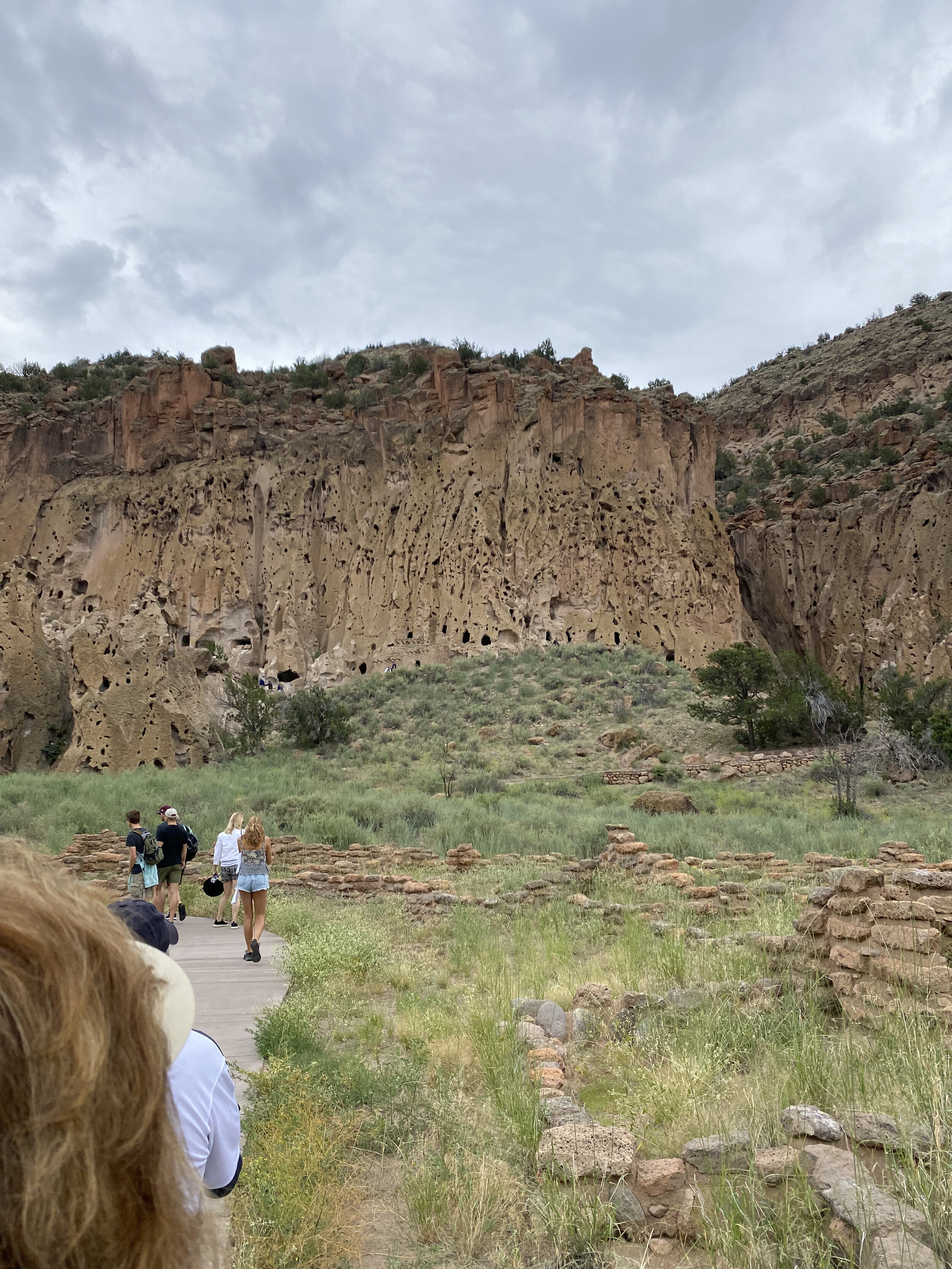

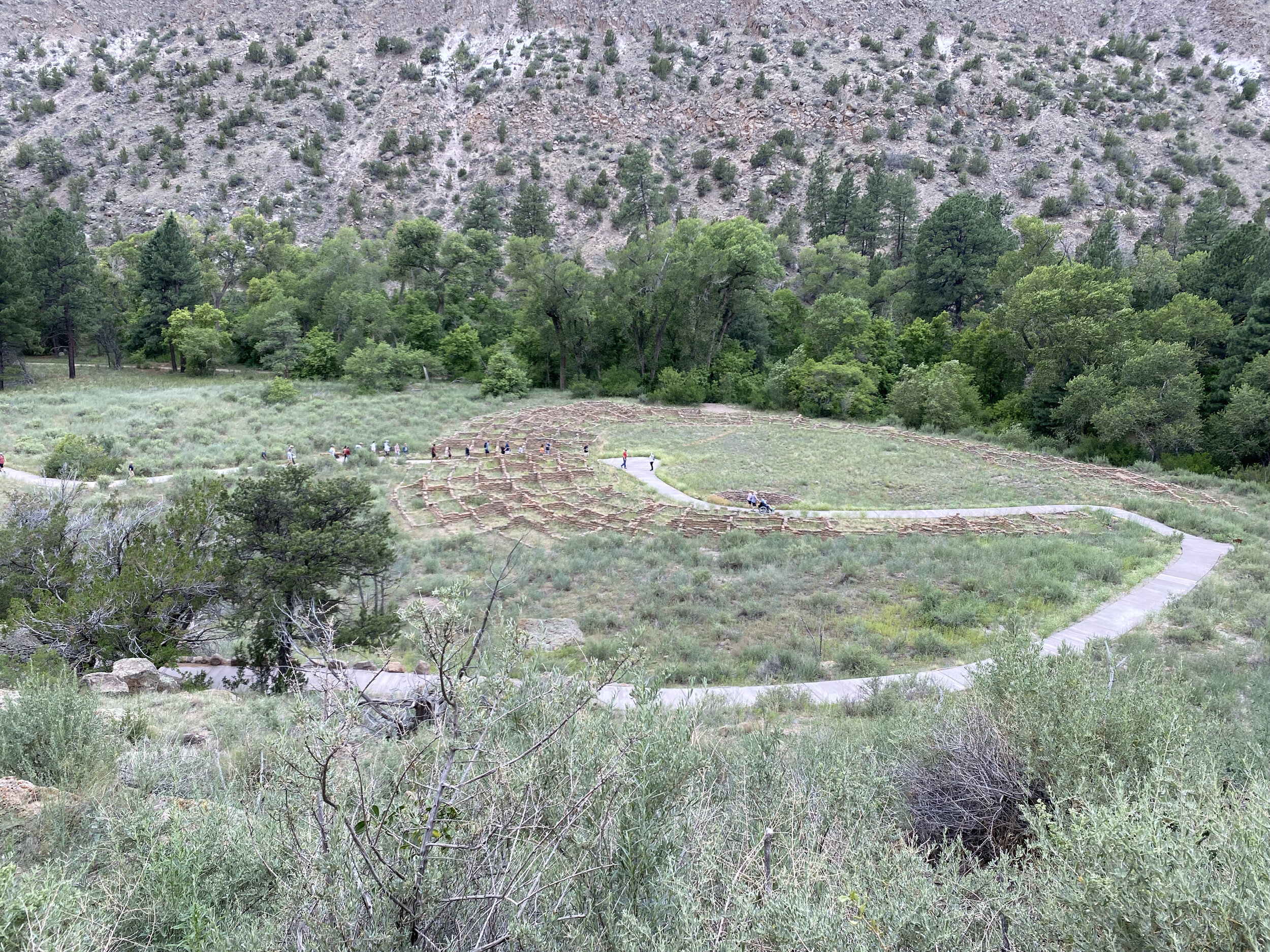
We had an amazing guide through it all. Paul, a friend of Tim’s sister, had worked volunteering at the park during the summers in the past. He decided to tag along and his descriptions and knowledge of the past civilizations was a game changer for us. Without him, we would have wandered the park amazed at the structures but having no history or anecdotes to connect them to the past.
To me, the most fascinating fact he pointed out was the Pueblo’s attention to the summer solstice. 99% of the people visiting the park miss it, but high on the cliff peak is a carving of the sun which perfectly lines up with the sunrise during the solstice on June 21st.


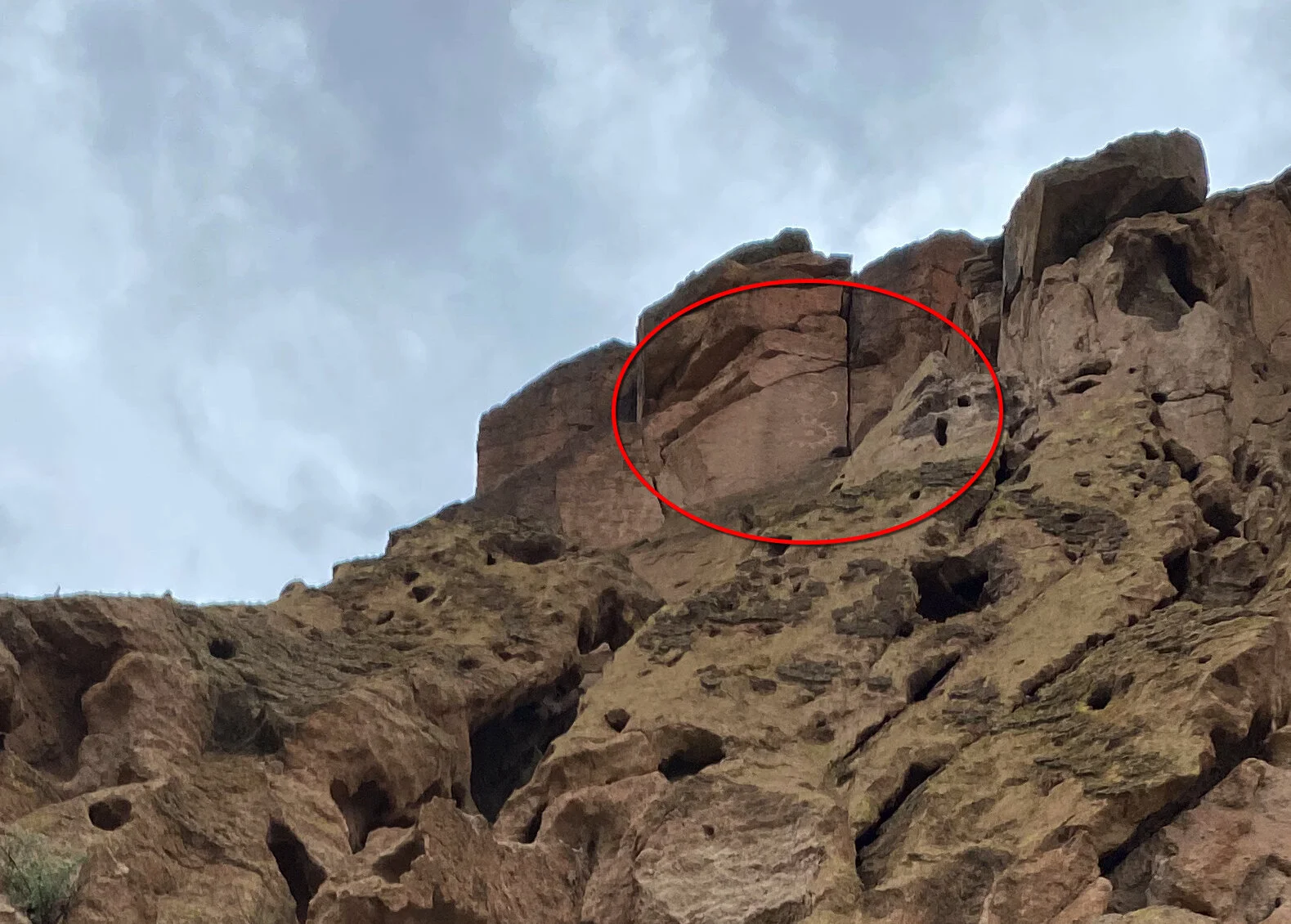
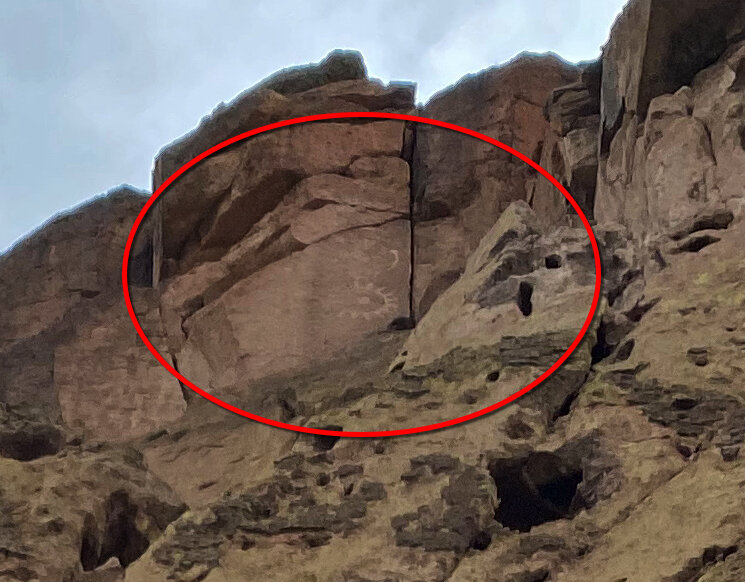
There are many, many crawl spaces visitors can explore. I was good for about 2 of them…but they were interesting nonetheless.
And walls are filled with petroglyphs. I should have captured more but didn’t., The most intriguing was the drawing of a toucan. Paul said that back during the Pueblo era, there was substantial trade with civilizations in what is now Mexico. The Toucan came back with the Pueblos as a pet.
We could have easily spent the entire day in park, but we had other plans for the afternoon. After taking the 1.4mi Loop trail, we headed back to civilization and ate at the Pig and Fig. Food was great and prepared us for the rugged 4-wheeling trip we would take afterward. Tim’s brother-in-law, David, took us on some very rugged trails outside the Los Alamos city limits. These were trails no standard vehicle could manage and there were times that I didn’t even think his would be up to the task.
The most amazing part of the entire day was our happening upon some cliff dwellings on our off-roading journey. We noticed similar carvings in the side of a cliff just as we had seen previously in the morning at the park. Sure enough, closer examination revealed the same plaster and charring of a Pueblo dwelling but we were easily 20 miles away from Bandelier.
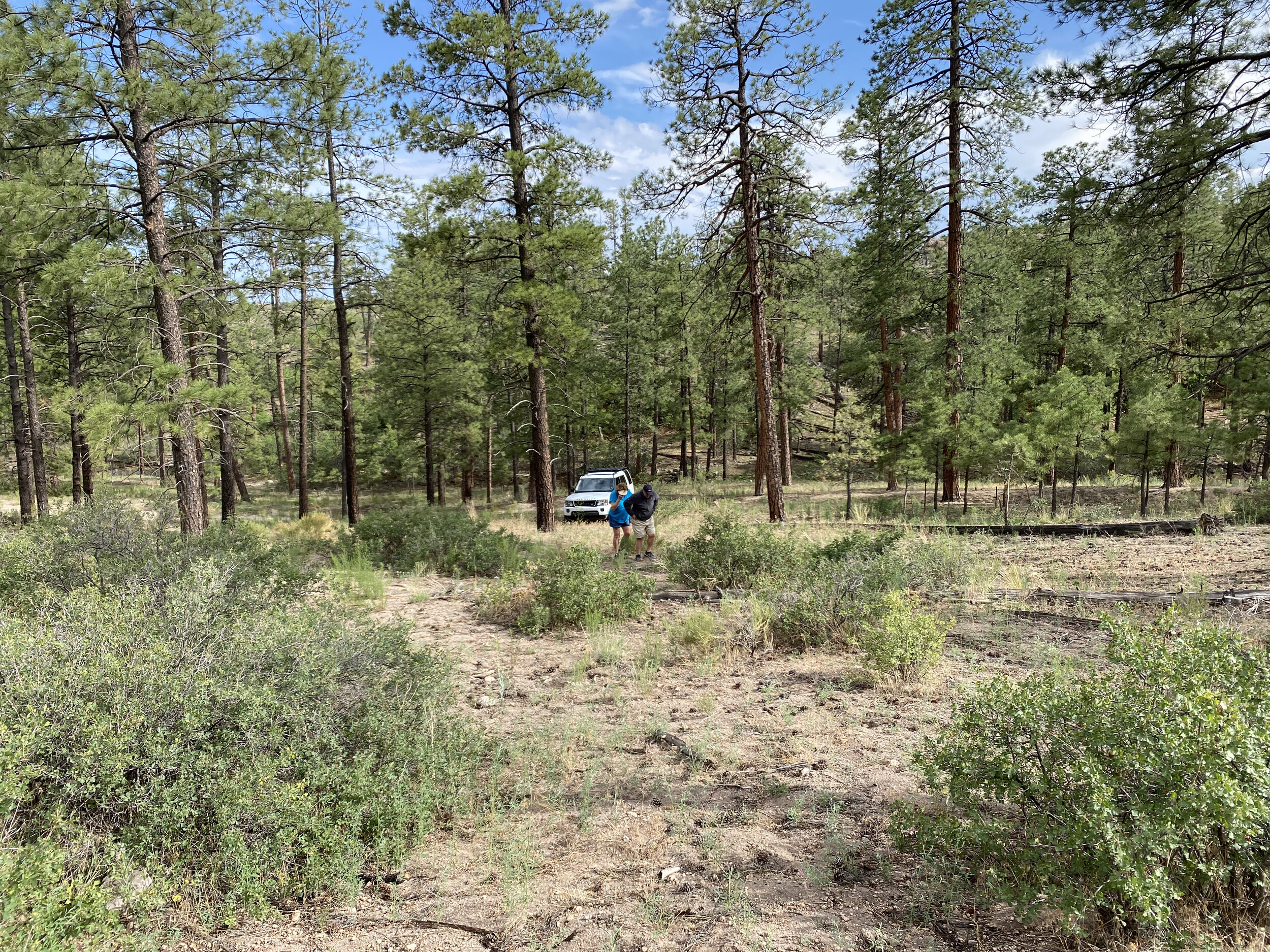

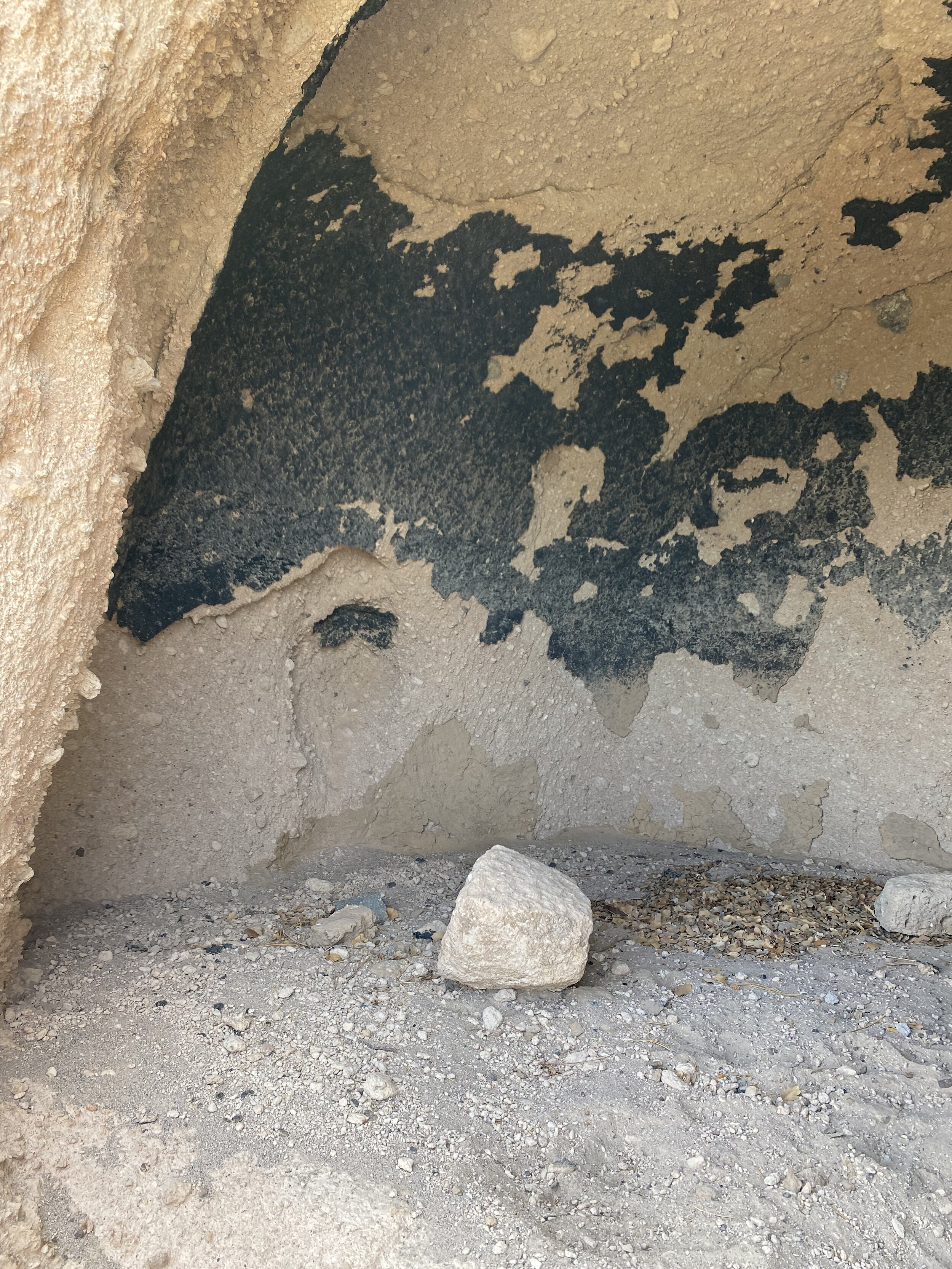
We also encountered remnants of an old Pueblo structure off the trail. You could see the stone outline of the base of the building. I found a number of potter chards around the perimeter of the site but left them as I found them.
What an amazing day! But before it became too dark, we managed to find our way back to Los Alamos and visited one of the local brewpub and toasted to a truly special and eventful day.












